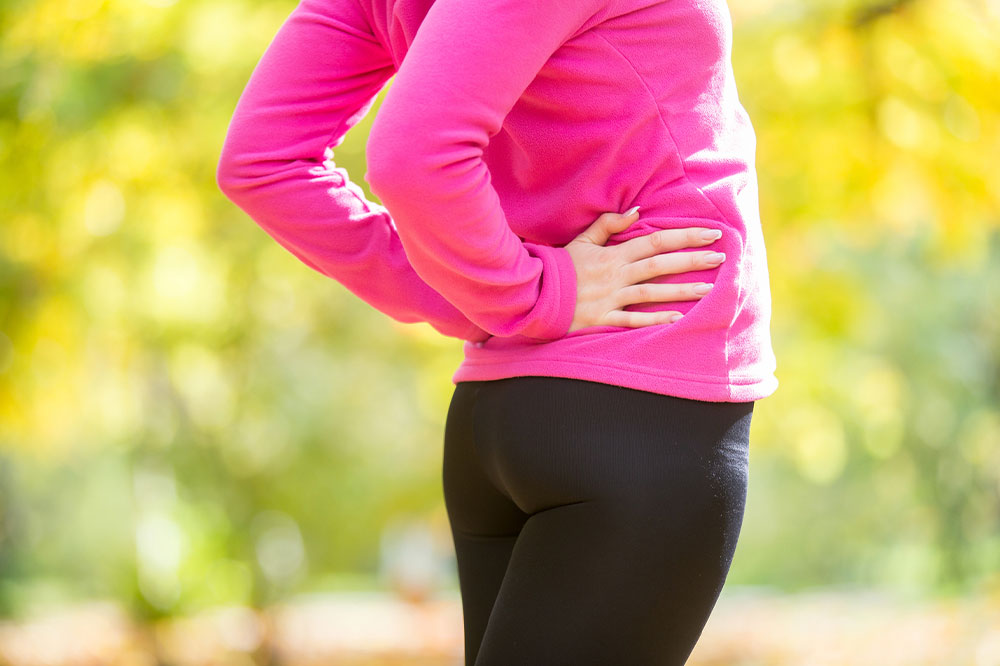
Symptoms, causes, and management for hip bursitis
Hip bursitis is the bursa swelling and inflammation in the area where the thighbone (femur) projects outwards, an attachment site for the gluteal muscles. Bursa is the fluid-filled sacs that protect and cushion the muscles, ligaments, and tendons. Also known as trochanteric bursitis, you may develop hip bursitis from an injury, the pressure within the hip, or repetitive rubbing. It is one of the top causes of hip pain.
Symptoms of hip bursitis
Tenderness and joint pain are the two most common symptoms associated with hip bursitis. You may also experience warmth and swelling around the affected area. Typically, the pain is sharp in the initial few days, but it may be achy and dull later. You will notice the pain more as you get off the bed or chair. It may also be more prominent when you sit for a long time or sleep on the affected side.
In most cases, acute hip bursitis flares in a few hours or days, but chronic flares, while intermittent, last from a few days to some weeks. Your acute bursitis may become chronic if you endure a hip injury or if it comes back. Over time, bursae become thick and aggravate the swelling, which can result in weakened muscles or limited movement.
Causes of hip bursitis
One or more of the following factors may be responsible for the condition:
Stress on the soft tissues from poorly positioned or abnormal bones or joints.
Calcium deposits or hip bone spurs in the tendons annexing the trochanter.
Injuries such as bumping the hip into an object, falling onto the hip, or lying on one side of the body.
A consistently incorrect posture from arthritis of the lower spine, scoliosis, or other spine issues.
Prior surgery around the hip or getting prosthetic implants in the hips
Other conditions or diseases like gout, rheumatoid arthritis, thyroid disease, or psoriasis can also lead to bursitis. In some cases, an infection may also cause bursitis.
Work or play activities that cause injury or overuse to the joint areas, like standing for extended periods, climbing, or running up the stairs.
Bursitis is most prevalent in elderly or middle-aged people, particularly women.
Diagnosis for hip bursitis
The doctor will first perform a physical examination, focusing on the specific movements that cause the pain and asking about the duration of the pain. Following this, they may order X-rays to rule out other issues, as bursitis does not show in X-rays. You may also undergo an MRI or ultrasound if the hip does not respond to treatment. Sometimes, doctors may inject the bursa with an anesthetic, and if the pain eliminates, it will indicate that you have hip bursitis.
Treatment for hip bursitis
Usually, bursitis pain will get better by itself. However, corrective measures like ice, rest, and pain relievers can help overcome the discomfort. But if the conservative treatments do not work, you may need the following:
Physical therapy to ease pain, strengthen the muscles in the affected region, and avoid recurrence.
Doctors may administer a corticosteroid into the bursa via injection to ease pain and inflammation in the hip.
When an infection causes hip bursitis, the doctor may prescribe some prescription treatment options.
An assistive device like a walking cane or any other device can help lower the pressure on the affected area.
In some rare cases, the doctor may drain the bursa surgically.
Prevention of hip bursitis
Bursitis is an outcome of overuse or excess pressure on the area. Hence, the best treatment is prevention. Consider rectifying underlying conditions like improper posture, leg length differences, or poor work or sports techniques.
You can also consider the following rules while performing any strenuous activities:
Take it slow and only gradually build on your activity level.
Use limited repetitions and force levels.
Stop whenever an unusual pain occurs.
Some additional tips that can help:
Use crutches or a walking cane for a week or more if needed.
Maintain hip muscles’ flexibility and strength.
Avoid repetitive activities that exert pressure on the hips.
Shop for a properly fitting shoe insert to overcome the leg length differences.




